September 25th Scots Book of Days
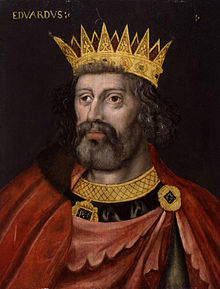 September 25 – 1237 Treaty of York between Henry III of England and Alexander II of Scotland, Scriptum cirographatum inter Henricum Regem Anglie et Alexandrum Regem Scocie de comitatu Northumbrie Cumbrie et Westmerland factum coram Ottone Legato and the particulars of the agreement are:
September 25 – 1237 Treaty of York between Henry III of England and Alexander II of Scotland, Scriptum cirographatum inter Henricum Regem Anglie et Alexandrum Regem Scocie de comitatu Northumbrie Cumbrie et Westmerland factum coram Ottone Legato and the particulars of the agreement are:
Oil painting of Henry III by unknown artist, ca. 1620, reign 18 October 1216 – 16 November 1272
The King of Scotland: quitclaims to the King of England his hereditary rights to the counties of Northumberland, Cumberland, and Westmorland; quitclaims 15,000 marks of silver paid by King William to King John for certain conventions not observed by the latter; and frees Henry from agreements regarding marriages between Henry and King Richard, and Alexander’s sisters Margaret, Isabella, and Marjory.
The King of England grants the King of Scotland certain lands within Northumberland and Cumberland, to be held by him and his successor kings of Scotland in feudal tenure with certain rights exempting them from obligations common in feudal relationships, and with the Scottish Steward sitting in Justice regarding certain issues that may arise, and these, too, are hereditary to the King of Scotland’s heirs, and regarding these the King of Scotland shall not be answerable to an English court of law in any suit.
The King of Scotland makes his homage and fealty – de praedictis terris.
Both kings respect previous writings not in conflict with this agreement, and any charters found regarding said counties to be restored to the King of England.
Treaty of York – 1237. In 1237 Alexander II signs the Treaty of York with Henry III of England. The treaty officially defined the border bewteen the two kingdoms – which exists to this day with the exception of Berwick-Upon-Tweed (annexed by England in 1482). Video: A history of Scotland: Hammers of the Scots.
http://www.bbc.co.uk/scotland/history/scotland_united/treaty_of_york/
1326 Invasion of England (1326) Isabella of France the She-wolf of France, was Queen consort and reaches Cambridge on the east of England and pursues Edward II of England. The local levies mobilised to stop them immediately changed sides, and by the following day Isabella was in Bury St Edmunds and shortly afterwards had 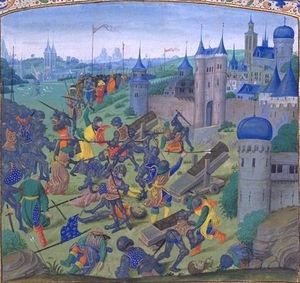 swept inland to Cambridge Thomas, Earl of Norfolk, joined Isabella’s forces and Henry of Lancaster – the brother of the late Thomas, and Isabella’s uncle – also announced he was joining Isabella’s faction, marching south to join her.
swept inland to Cambridge Thomas, Earl of Norfolk, joined Isabella’s forces and Henry of Lancaster – the brother of the late Thomas, and Isabella’s uncle – also announced he was joining Isabella’s faction, marching south to join her.
1396 battle of Nicopolis
Crusade of Nicopolis and was the last large-scale crusade of the Middle Ages. Rout of an allied army of Hungarian, ![]()
![]() French, Burgundian, German and assorted troops (assisted by the Venetian navy) at the hands of an
French, Burgundian, German and assorted troops (assisted by the Venetian navy) at the hands of an![]() Ottoman force and
Ottoman force and![]() Moravian Serbia, raising of the siege of the Danubian fortress of Nicopolis and leading to the end of the Second Bulgarian Empire. John de Bourgogne ‘the fearless’ was at Nicopolis, and wife Margaret are great grand parents of Maria Guelders Queen of Scots to James 2nd Stewart King.
Moravian Serbia, raising of the siege of the Danubian fortress of Nicopolis and leading to the end of the Second Bulgarian Empire. John de Bourgogne ‘the fearless’ was at Nicopolis, and wife Margaret are great grand parents of Maria Guelders Queen of Scots to James 2nd Stewart King.
1475 September king of Scots adjourned meeting of estates to Epiphany following, when Parliament actually met. 1430 Pestilenita volatilis began at Edinburgh in February
1432 ditto began at Haddington, probably influenae (not plague)
1430 An Adddicioun of Scollis Cornicklis and Deidis famine dysentery orlicentery, ‘great dearth for the boll of wheat was at 40s(shillings) and boll of alt mean 30s, great that there dided passing people forhunger, …. Pestilence came in Scotland began at Dumfiries, callit the Pestilence but Mercy, nane that ever recoverit, butthey died within twenty-for hours. Land-ill or wame-ill dysentery or lientery,
1455 james 2nd great pestilential mortality of men throughout Scotland. A History of Epidemics in Britain from A.D. 664 to the Extinction of Plague Charles Creighton, M.A. M.D. Demonstrator of Anatomy University of Cambridge. 1891
1629 Treaty of Altmark truce Sweden was, for six years, to retain possession of its Livonian conquests, besides holding Elbling, the Vistula delta, Braniewo in West, and Pillau and Memel in Prussia, with the right to levy tolls at Pillau, Memel, Danzig, Labiau and Windau. Part of Polish-Swedish War and Battle of Stralsund (1628).
1643 the Long Parliament and the Westminster Assembly ratify the Solemn League and Covenant. Under the terms of the deal with Scotland, the Committee of Safety is superseded by the Committee of Both Kingdoms. A century and a quarter later, Committees of Safety will be organized in the North American colonies as the rupture begins.
1696 Sir Archibald Grant (25 September 1696–17 September 1778), 2nd Baronet born. Archbald was the eldest son of Sir Francis Grant, 1st Baronet, a Lord of Session, with the judicial title of Lord Cullen. His father had sold his ancestral estate in Banffshire. He purchased that of Monymusk, Marr, Aberdeen, on the River Don, in 1713. This was inherited by Alexander on his father’s death in 1726. Alexander passed as a Scottish advocate in 1714, and was subsequently called to the English bar at Lincoln’s Inn. Archibald’s first wife, Jean, was daughter of the Reverend William Meldrum of Meldrum, and he had two daughters. Archibald’s 4th wife was Jane (1707–1788), widow of Andrew Millar VI, the London bookseller.
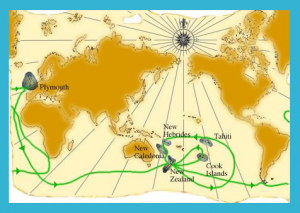 1774 New Caledonia is discovered by Scottish explorers. Calaedonia is the ancient Latin Roman name for Scotland. Captain James Cook was the 2nd of eight children of James Cook, a Scottish
1774 New Caledonia is discovered by Scottish explorers. Calaedonia is the ancient Latin Roman name for Scotland. Captain James Cook was the 2nd of eight children of James Cook, a Scottish  farm labourer from Ednam near Kelso, Scots borders between Tweed and Teviot rivers, and his locally born wife, Grace Pace, from Thornaby-on-Tees.
farm labourer from Ednam near Kelso, Scots borders between Tweed and Teviot rivers, and his locally born wife, Grace Pace, from Thornaby-on-Tees.
Cook’s second voyage showing Plymouth, New Caledonia, New Hebrides, Tahiti, Cook Islands, New Zealand.
http://www.jamescook.cz/en/james-cook-and-his-expeditions/
http://en.visitnewcaledonia.com/discover/history
1915 Battle of Loos France. ![]()
![]() vs.
vs. ![]() John Forbes-Sempill 18th Lord Sempill (21 August 1863 – 28 February 1934) was a Scottish peer, the 18th Lord Sempill and 9th Baronet of Craigievar. Commanded the 8th Battalion Black Watch in the First World War, where he was severely wounded at the Battle of Loos and mentioned in despatches. He later claimed to have been the first man from Kitchener’s Army to land in France; he had leapt ashore before the troopship had tied up at the dock. He later served in the House of Lords as a Scottish representative peer, and was later the chairman of the Aberdeenshire Territorial Army Association, the Honorary Colonel of the 5th Battalion Gordon Highlanders – his brother Robert’s battalion – and an aide-de-camp to King George V. 1915 to 14 October 1915 Battle of Loos, notable for being the first battle in which British forces used poison gas, the 9th (Scottish ) Division assaulted the Hohenzollern Redoubt, the 5th Camerons suffered horrific casualties. After the 1st South African Infantry Brigade Group joined in early 1916, the 9th (Scottish) Division was known colloquially as the Jocks and Springboks. 15th (Scottish) Division fought in the Battle of Loos, the Battle of the Somme (1916) which included the battles of Pozieres and Flers-Courcelette, and the Third Battle of Ypres. 9th (Service) Battalion, the Gordon Highlanders (until January 1915), 9th (Service) Battalion, the Black Watch (until February 1918), 7th (Service) Battalion, The Queen’s Own Cameron Highlanders (from January 1915 until June 1918), 13th (Service) Battalion, the Royal Scots (Lothian Regiment) 1/8th (The Argyllshire) Battalion, the Argyll & Sutherland Highlanders (from June 1918), 10th (Service) Battalion, the Cameronians
John Forbes-Sempill 18th Lord Sempill (21 August 1863 – 28 February 1934) was a Scottish peer, the 18th Lord Sempill and 9th Baronet of Craigievar. Commanded the 8th Battalion Black Watch in the First World War, where he was severely wounded at the Battle of Loos and mentioned in despatches. He later claimed to have been the first man from Kitchener’s Army to land in France; he had leapt ashore before the troopship had tied up at the dock. He later served in the House of Lords as a Scottish representative peer, and was later the chairman of the Aberdeenshire Territorial Army Association, the Honorary Colonel of the 5th Battalion Gordon Highlanders – his brother Robert’s battalion – and an aide-de-camp to King George V. 1915 to 14 October 1915 Battle of Loos, notable for being the first battle in which British forces used poison gas, the 9th (Scottish ) Division assaulted the Hohenzollern Redoubt, the 5th Camerons suffered horrific casualties. After the 1st South African Infantry Brigade Group joined in early 1916, the 9th (Scottish) Division was known colloquially as the Jocks and Springboks. 15th (Scottish) Division fought in the Battle of Loos, the Battle of the Somme (1916) which included the battles of Pozieres and Flers-Courcelette, and the Third Battle of Ypres. 9th (Service) Battalion, the Gordon Highlanders (until January 1915), 9th (Service) Battalion, the Black Watch (until February 1918), 7th (Service) Battalion, The Queen’s Own Cameron Highlanders (from January 1915 until June 1918), 13th (Service) Battalion, the Royal Scots (Lothian Regiment) 1/8th (The Argyllshire) Battalion, the Argyll & Sutherland Highlanders (from June 1918), 10th (Service) Battalion, the Cameronians 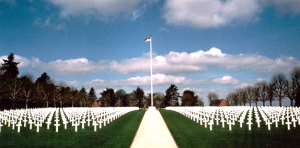 (Scottish Rifles) 12th (Service) Battalion, the Highland Light Infantry (until February 1918.
(Scottish Rifles) 12th (Service) Battalion, the Highland Light Infantry (until February 1918.
www.abmc.gov/ American military cemetery Somme France with 1,844 souls, 40% of whom have Scots ancestry (based on the Scots ancestry of American Presidents).
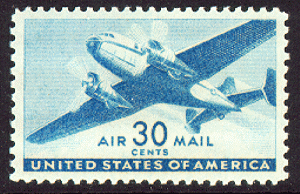 1941 Twin-motored transport plane.
1941 Twin-motored transport plane.
- Douglas DC-3 twin -engine planes of pre-World War II.
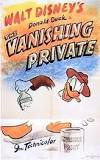 1942 The Vanishing Private is a 1942 cartoon by the Walt Disney Studios, starring Donald Duck in the World War II years.
1942 The Vanishing Private is a 1942 cartoon by the Walt Disney Studios, starring Donald Duck in the World War II years.
1946 Douglas DC-4 Skymaster was developed during World War II and led to the DC -6 and DC-7 series with pressurized cabins.
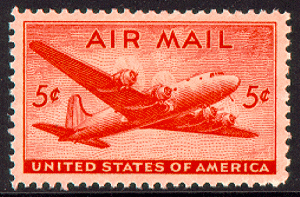 Aircraft brought U.S. dominance of air
transportation during and after World War II. In 1951 the United States built
more than 80 percent of the world’s airliners.
usstampgallery.com
Aircraft brought U.S. dominance of air
transportation during and after World War II. In 1951 the United States built
more than 80 percent of the world’s airliners.
usstampgallery.com
1961 Heather Locklear, (born September 25, 1961) is an American actress best known for her television roles as Sammy Jo Carrington on Dynasty, actress, Amanda Woodward on Melrose Place, and Caitlin Moore on Spin City. Scots ancestry.
Disclaimer: The author of each article published on this web site owns his or her own words. The opinions, beliefs and viewpoints expressed by the various authors and forum participants on this site do not necessarily reflect the opinions, beliefs and viewpoints of Utah Standard News or official policies of the USN and may actually reflect positions that USN actively opposes. No claim in public domain or fair use. © John Choate.
Utah Standard News depends on the support of readers like you.
Good Journalism requires time, expertise, passion and money. We know you appreciate the coverage here. Please help us to continue as an alternative news website by becoming a subscriber or making a donation. To learn more about our subscription options or make a donation, click here.
To Advertise on UtahStandardNews.com, please contact us at: ed@utahstandardnews.com.


Comments - No Responses to “September 25th Scots Book of Days”
Sure is empty down here...